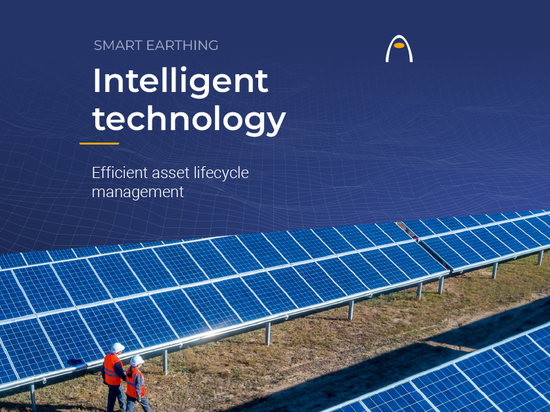
#Industry News
How lightning is formed: what science says
How lightning is formed: what science says
Lightning is an atmospheric electrostatic discharge caused by the accumulation of electric charge in clouds. These discharges occur when the dielectric breakdown of the air occurs when a particular electric field value is exceeded. Consequently, an ionised channel is generated in a plasma state that facilitates charge transfer between two points. Scientific knowledge of how lightning is formed should be used to optimise lightning protection systems.
The study of lightning and related phenomena involves different branches of physics, from atmospheric physics to plasma physics and quantum electrodynamics. To date, the exact mechanism by which lightning is generated in clouds is not fully understood, nor is the mechanism by which lightning strikes a certain point. However, despite the difficulties in studying these atmospheric discharges, more and more information is becoming available from observations and measurements. [1].
The following is a summary of what science says about how lightning is formed, focusing in particular on cloud-to-ground lightning because of its relevance to thunderstorm protection.
Lightning formation in thunderclouds
Storm clouds are usually of the cumulonimbus type and form when conditions are right for the cloud to grow vertically. Cumulonimbus clouds are gigantic heat engines that convert solar energy into the mechanical energy of air currents and the electrical energy of lightning. [2], [3].
When storm clouds form, the balance of positive and negative charges in the atmosphere is broken, as the polarisation of electric charges takes place. Thus, the lower part of the clouds becomes negatively charged, inducing a positive charge on the ground and the elements above it. Thus, an electric field of up to tens of kilovolts is generated.
The cloud acquires electric charge through various electrification mechanisms. The main one is thought to involve collisions between millimetre-sized particles of soft hail or graupel and small ice crystals in the presence of supercooled water droplets. Supercooled water is characterised by the fact that it is not frozen despite the temperature below 0 °C [1]-[4].
However, the full details of the discharge microphysics processes that generate the tracers and the processes that produce the electric fields necessary to generate lightning are not yet available. Thus, the physical mechanism (or mechanisms) by which atmospheric discharges are initiated within thunderstorm clouds has not yet been resolved. This is because, after decades of measuring the electric field within clouds, an electric field sufficient to trigger discharges has not been detected, at least according to the current scientific consensus [1].
Connection of the downward and upward tracers forming the cloud-to-earth ray
When the ionisation electric field of the air is exceeded, the air can turn from an almost perfect insulator into a conductive medium through which the cloud’s charge seeks the most direct path to the ground. A tracer or downward leader is then generated and leaves the cloud carrying part of its charge. It is also known as a “stepped leader” because it advances in discrete steps. In the cloud-to-ground lightning path, the downward leader can split into several branches. [2] and propagate in any direction, but always in jumps that depend on the current associated with that discharge.
Once the lightning is close enough to the ground, the electric field is raised to ground level and one or more grounded element points begin to discharge corona discharges [2]. [2]. These are electrical discharges produced by the ionisation of the gas surrounding a charged conductor. From them, upward leaders or tracers are generated. The first upward leader that reaches the downward leader will create a cloud-to-ground discharge path. In the final jump of the downward tracer, the direction is no longer random but determined by the upward tracer within reach.
When intercepted by an object, the current seeks the fastest path to ground generating a very high energy current pulse with an amplitude of tens or hundreds of thousands of amperes (return stroke). [2]. If the cloud is further charged after the return stroke, new arcs known as subsequent strokes may appear.
The recent observational study by Saba et al. [5] used a high-speed video camera to analyse the dynamics of leaders in a cloud-to-ground beam. . The video of this open-access publication is available online.
The assessed impact was recorded on 30 March 2021 and, from the video images obtained, 31 upward leaders from the surrounding buildings were found in the direction of the downward leaders. The upward leaders were characterised by straight and unbranching propagation, while the downward leaders were characterised by branching. The upward leader that connected to the downward leader was three times faster than the rest of the 31 leaders detected.
In a later publication, also observational, Saba et al. [6] analysed a previous impact (from 1 February 2017), intercepted by a lightning rod of a residential building. In this study, electric field, current and velocity measurements of the upward leaders were made using high-speed video cameras, an electric field sensor and current sensors installed on the lightning rods.
The authors observed that the upstream leaders responded to the different ramifications of the downstream leader, alternating their propagation and intensity. This intermittent pattern stopped just before the connection of the leaders, when all the downward tracers intensified and, consequently, the upward leaders became synchronised in their current pulses. [6].
In addition, the upward leaders induced by the downward tracers propagated at a more or less constant speed. The upward leader connecting to the downward one was the fastest of all those generated, followed by the upward leader closest to the last jump or final jump. On the other hand, the upward leader connecting to the downward leader experienced an increase in velocity just before the final jump occurred, estimated to be at least 45 times higher than the average velocity of the upward leader. Likewise, the highest DC current was measured on the upstream leader connecting to the downstream tracer [6].
Science-based smart lightning protection
Scientific knowledge of the lightning phenomenon is crucial for the optimisation of lightning protection systems. Early Streamer Emission devices (ESE Air Terminals) are based on continuously emitting the upward tracer before any other object within their protection radius. Instead of being a random process as in the case of conventional protection, ESEs are characterised by controlling the emission of the tracer by adjusting it at the right time and thus allowing a larger area of coverage.
The DAT CONTROLER® REMOTE smart lightning conductor stands out in the ESE air terminals market, capable of self-assessing and communicating daily diagnostics via IoT connectivity. This ESE not only complies with the regulatory tests, performed consecutively on the same sample but is certified beyond the regulatory requirements to operate in adverse conditions of heavy rain, explosive atmospheres, etc.
In addition, the AT Research Center has the best-equipped laboratory in Europe for the development and validation of our line of thunderstorm safety solutions. The AT Research Center team is made up of experts from multiple disciplines with extensive experience in different sectors to support the quality of our services and products in the Smart Lightning range with the most up-to-date knowledge. For this reason, at Aplicaciones Tecnológicas S.A. we are always up to date with advances in the understanding of the lightning phenomenon, while remaining at the forefront of technological development in the field of safety against electrical storms.
If you would like to contact our experts to learn more about the physics of lightning and the most advanced protection solutions such as DAT CONTROLER® REMOTE, you can do so by following this link. You can also attend any of our free online trainings on the webinars page.
References
[1] J. R. Dwyer and M. A. Uman, ‘The physics of lightning’, Phys. Rep., vol. 534, no. 4, pp. 147–241, 2014.
[2] V. Cooray, An Introduction to Lightning. Springer Netherlands, 2015.
[3] C. Gomes, Ed., Lightning, vol. 780. Springer Singapore, 2021.
[4] M. A. Cooper and R. L. Holle, Reducing Lightning Injuries Worldwide. 2019.
[5] M. M. F. Saba, D. R. R. da Silva, J. G. Pantuso, and C. L. da Silva, ‘Close view of the lightning attachment process unveils the streamer zone fine structure’, Geophys. Res. Lett., vol. 49, no. 24, Dec. 2022.
[6] M. M. F. Saba, P. B. Lauria, C. Schumann, J. C. de O. Silva, and F. de L. Mantovani, ‘Upward leaders initiated from instrumented lightning rods during the approach of a downward leader in a cloud‐to‐ground flash’, J. Geophys. Res., vol. 128, no. 8, Apr. 2023.






